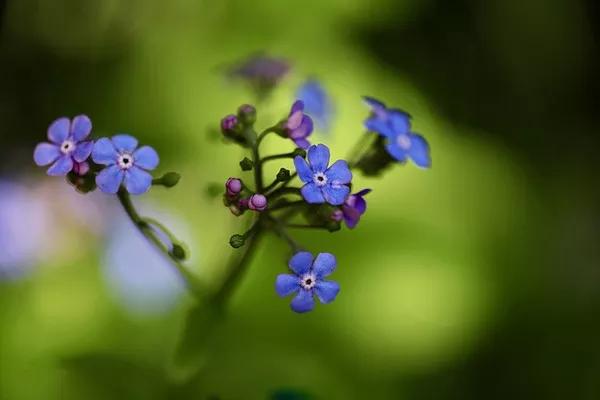Flowers are nature’s exquisite artwork, each petal, color, and fragrance a testament to the beauty of the natural world. They have long been cherished for their aesthetic appeal and the emotions they evoke. One way to immortalize this fleeting beauty is by pressing flowers in a book. This time-honored method of preservation allows us to capture the essence of flowers for years to come, turning them into sentimental keepsakes or artistic creations. In this article, we will explore the art of preserving flowers in books, offering step-by-step guidance to help you create stunning pressed flower designs.
Why Press Flowers in a Book?
Pressing flowers is a simple yet effective way to preserve their vibrant colors and delicate forms. Whether you want to cherish a meaningful bouquet, create unique art pieces, or simply enjoy the process of flower preservation, there are several reasons to explore this timeless craft:
Memory Preservation: Pressed flowers can hold emotional significance, serving as mementos from special occasions like weddings, anniversaries, or vacations. Keeping them in a book allows you to revisit these memories for years to come.
Artistic Expression: Pressed flowers can be used in various creative projects, including scrapbooking, card-making, and framed botanical art. Their intricate beauty can enhance any artistic endeavor.
Botanical Study: Flower pressing is a valuable tool for botanical enthusiasts and researchers. It allows for detailed examination of the flower’s structure and can serve as a valuable reference.
Eco-Friendly Decor: Pressed flower designs can be used for eco-friendly and sustainable decor, reducing the need for artificial or freshly cut flowers.
Materials You’ll Need
Before you embark on the journey of pressing flowers in a book, gather the necessary materials:
Fresh Flowers: Choose your flowers with care. Pick blooms that are fresh, but not overly mature, as they should not have started to wilt.
Heavy Books: Select heavy, hardcover books with acid-free pages. The pages should be thick enough to absorb moisture without damaging the book.
Parchment Paper: Use parchment paper to protect the pages of the book from moisture and the flower’s pigments.
Absorbent Paper: You’ll need blotting or absorbent paper to place between the parchment paper and flowers. This will help draw out moisture and prevent mold.
Weight: To apply even pressure, you’ll require weights like bricks or additional heavy books.
Flowers: How to Choose and Prepare
Choosing the right flowers is crucial to achieve the best results when pressing flowers in a book. Here are some tips for selecting and preparing your blooms:
Freshness Matters: Pick your flowers in the morning when they are at their freshest. Avoid any flowers that are damaged or have begun to wilt.
Flat Blooms Work Best: Flowers with flat or open shapes, such as pansies, daisies, or violets, are ideal for pressing.
Remove Excess Moisture: Gently shake or tap the flowers to remove any excess moisture. Flowers should be dry to the touch, but not desiccated.
Trim Stems and Leaves: Trim the stems and leaves, leaving only the petals and small, flat parts of the flower. Removing excess greenery reduces the chance of mold development.
The Pressing Process
Now that you have your materials and prepared your flowers, let’s delve into the pressing process:
Arrange Flowers: Lay a piece of blotting paper on one page of the open book. Place your flowers on the blotting paper, ensuring they don’t overlap.
Parchment Paper Layer: Put a piece of parchment paper over the flowers. This will protect the flowers and book pages from each other.
Layer, Press, and Repeat: Continue layering blotting paper, flowers, and parchment paper until you’ve used all the flowers you want to press. Remember to leave enough space between flowers to avoid overlap.
Close the Book: Gently close the book, ensuring the flowers stay in their desired positions. Place additional books or weights on top of the closed book to apply even pressure.
Be Patient: Leave the book undisturbed in a dry, cool place for about two to four weeks. This allows the flowers to fully dry and press without any disturbance.
Check for Dryness: After the recommended time, carefully open the book and check the flowers. They should be dry, flat, and brittle to the touch.
Mount or Store: Once the flowers are completely dry, you can remove them from the book and mount them in frames or store them in a safe, dry place. Use acid-free adhesive and materials for long-term preservation.
Tips for Success
To ensure your flower pressing endeavors are successful, here are some additional tips:
Patience is Key: Rushing the process can result in poor outcomes. Give your flowers ample time to dry and press.
Experiment with Different Flowers: Different flowers may require varying amounts of pressing time and may yield different results. Don’t hesitate to experiment.
Use Quality Materials: Invest in acid-free paper and high-quality books to ensure your pressed flowers remain vibrant and intact.
Prevent Moisture: Store your pressed flowers in a cool, dry place to prevent moisture damage.
Document Your Creations: Label your pressed flowers with their names and the date of pressing to create a personal herbarium.
Conclusion
Pressing flowers in a book is an enjoyable and rewarding way to capture the fleeting beauty of nature. Whether you wish to preserve cherished memories, express your creativity, or explore the intricate details of flowers, this age-old technique offers endless possibilities. With the right materials and a bit of patience, you can create stunning pressed flower art that will bring joy and beauty into your life for years to come. So, gather your favorite flowers and embark on a journey of preservation and artistry, one petal at a time.


